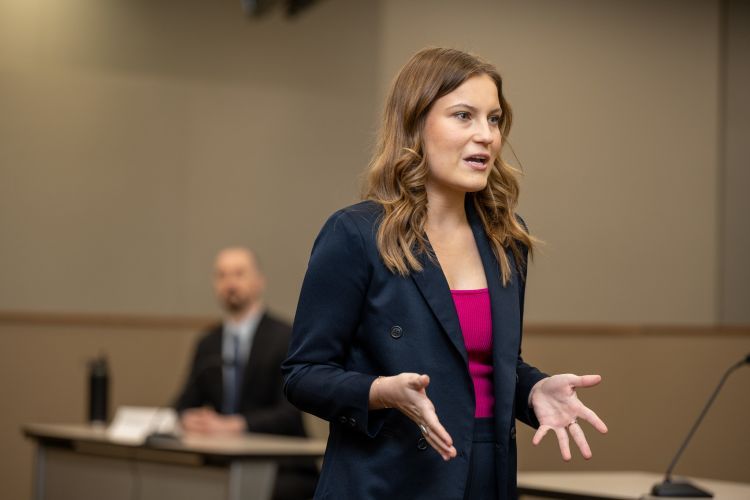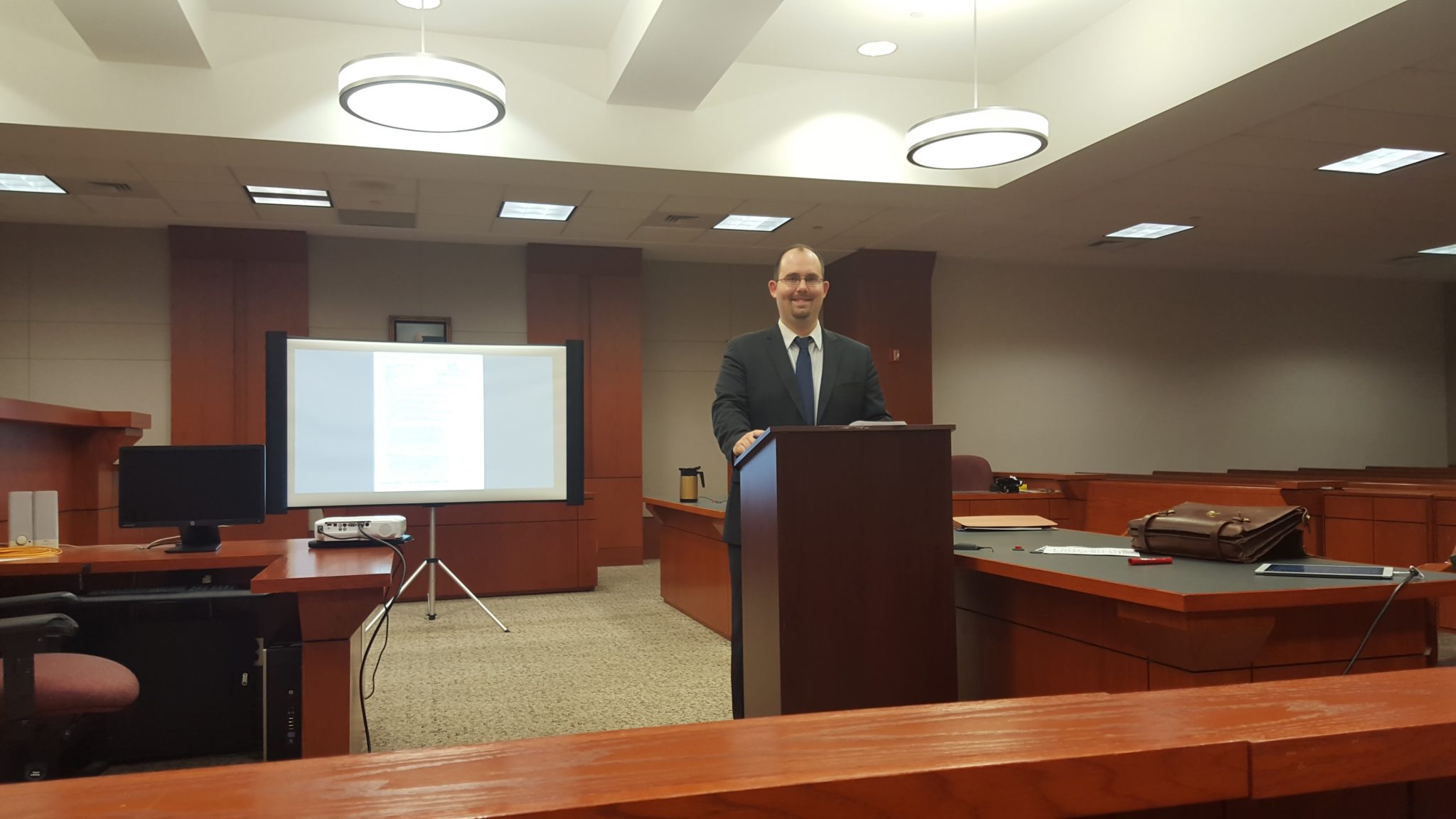Just How to Develop Involving Test Discussions That Gain Juries and Juries
Crafting compelling trial presentations that captivate courts and courts is a nuanced art that calls for a strategic approach. From the careful consideration of the audience's assumptions to the smooth assimilation of narration methods, each aspect plays a vital duty in forming the result of a legal case - Trial Presentations. By employing innovative aesthetic devices, including interactive aspects, and devoting time to rigorous practice and rehearsal, lawyers can substantially improve the impact of their courtroom discussions. The capability to engage and persuade with well-crafted presentations is an ability that can make all the difference in winning over a court or court, ultimately tipping the ranges of justice in one's support.
Understanding Your Target Market
To efficiently involve your audience throughout trial discussions, it is important to recognize their preferences, assumptions, and level of proficiency in the subject. By tailoring your discussion to meet the certain needs of the audience, you can boost their understanding and retention of the information offered.
Begin by investigating the demographics of the target market, such as age, education degree, and line of work. This information can assist you gauge their experience with lawful procedures and change your discussion style appropriately. For instance, a jury may need less complex language and more visual help compared to a group of attorneys.
Furthermore, think about the emotional and emotional facets of your audience. Are they understanding towards certain arguments or more inclined in the direction of truths and proof? Comprehending these nuances can assist you mount your presentation in a manner that resonates with the target market on a much deeper degree.
Storytelling Strategies
Understanding your target market's expectations and choices can dramatically affect the effectiveness of your trial presentations, specifically when implementing narration strategies to encourage and astound. Narration is an effective tool that can assist attorneys link with judges and juries on a more psychological degree, making complicated legal disagreements much more relatable and unforgettable.

Incorporating vibrant details, individual stories, and rhetorical devices can further boost the narration experience, keeping the audience involved and spent in the outcome of the instance. By crafting a convincing story that reverberates with the worths and emotions of the jury and courts, legal representatives can boost the chances of winning their disagreements and achieving desirable decisions.
Visual Discussion Tools
Making use of visual discussion tools can significantly boost the effect and effectiveness of test discussions by supplying a visually engaging method other to share intricate information to courts and judges. Aesthetic aids such as graphes, charts, animations, and representations can aid simplify detailed details, making them a lot more available and easy to understand to the audience. By integrating aesthetic elements into test discussions, lawyers can produce an engaging narrative that resonates with jurors and leaves an enduring impression.

Incorporating Interactive Aspects
Including interactive elements into trial presentations can improve target market involvement and understanding, fostering a much more immersive and interactive courtroom experience. By integrating aspects such as interactive timelines, 3D computer animations, clickable displays, and digital reality reconstructions, legal experts can mesmerize courts and jurors, making intricate details more unforgettable and easily accessible.
Interactive timelines enable a vibrant display screen of sequential occasions, aiding the target market comprehend the series of crucial incidents in a situation. 3D computer animations can bring criminal activity scenes or crash repairs to life, supplying a thorough graph that helps in clearing up elaborate details. Clickable exhibits enable users to connect with proof, papers, or pictures, enabling a hands-on exploration of our website critical information.
Additionally, online reality reconstructions can click to read move the target market into the heart of the action, providing an engaging point of view that conventional presentations may do not have. These interactive components not only engage the audiences yet also encourage them to actively get involved in the trial procedures, bring about a much more impactful and convincing court room discussion.
Technique and Wedding Rehearsal
To properly utilize the capacity of interactive aspects in trial discussions, detailed method and wedding rehearsal are vital to ensure smooth combination and delivery in the court room setting. Practice and practice session assistance trial speakers end up being familiar with the web content, timing, and flow of their discussions, enabling them to confidently browse through various elements such as video clips, animations, or interactive graphics. By practicing their shipment, speakers can fine-tune their talking skills, body movement, and general discussion style to boost persuasion and integrity before the court and judge.
During practice, presenters can recognize any technological issues that might arise with interactive aspects, ensuring that whatever runs efficiently during the real test. Additionally, practicing before a mock target market or coworkers can offer useful feedback on the efficiency of the interactive parts and the overall presentation. This responses permits presenters to make needed changes and improvements before entering the courtroom, eventually raising the impact and success of their trial presentations.
Verdict
In conclusion, creating appealing test discussions that captivate judges and courts calls for a deep understanding of the target market, effective storytelling methods, visual devices, interactive components, and thorough practice (Trial Presentations). By executing these methods, lawyers can properly convey their arguments and evidence in a compelling manner that resonates with the decision-makers in the courtroom
Utilizing visual presentation tools can significantly improve the effect and efficiency of trial presentations by providing a visually appealing method to communicate complicated info to judges and juries. By incorporating aesthetic components right into test presentations, lawyers can create an engaging story that resonates with jurors and leaves a long lasting impression.
One popular visual discussion tool is the use of multimedia discussions, which permit for the combination of videos, photographs, and audio recordings to supplement spoken debates. Trial Presentations.To successfully take advantage of the capacity of interactive elements in test discussions, extensive practice and rehearsal are important to guarantee smooth combination and delivery in the court room setup. Method and wedding rehearsal help test presenters come to be familiar with the content, timing, and circulation of their presentations, permitting them to confidently navigate with different components such as videos, computer animations, or interactive graphics